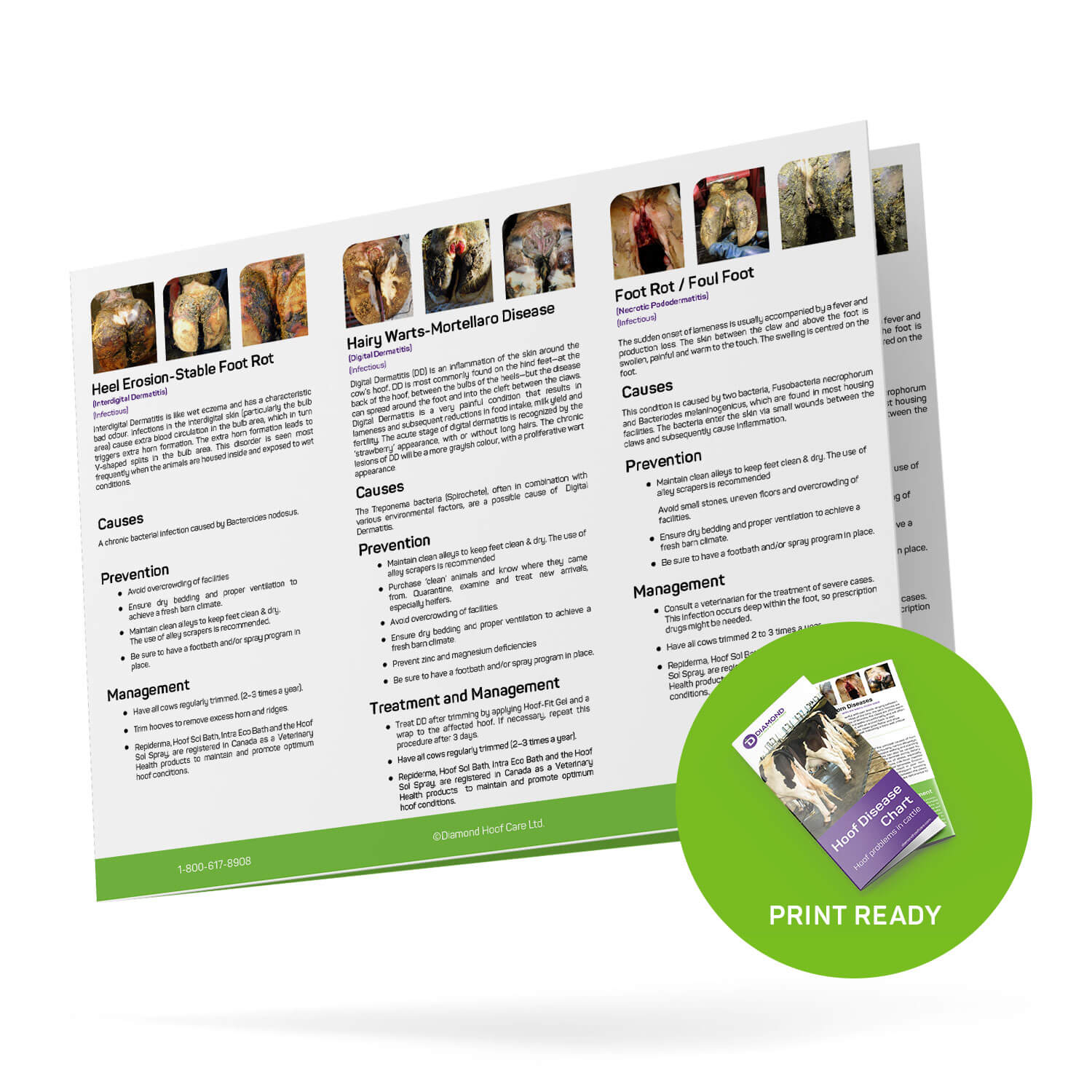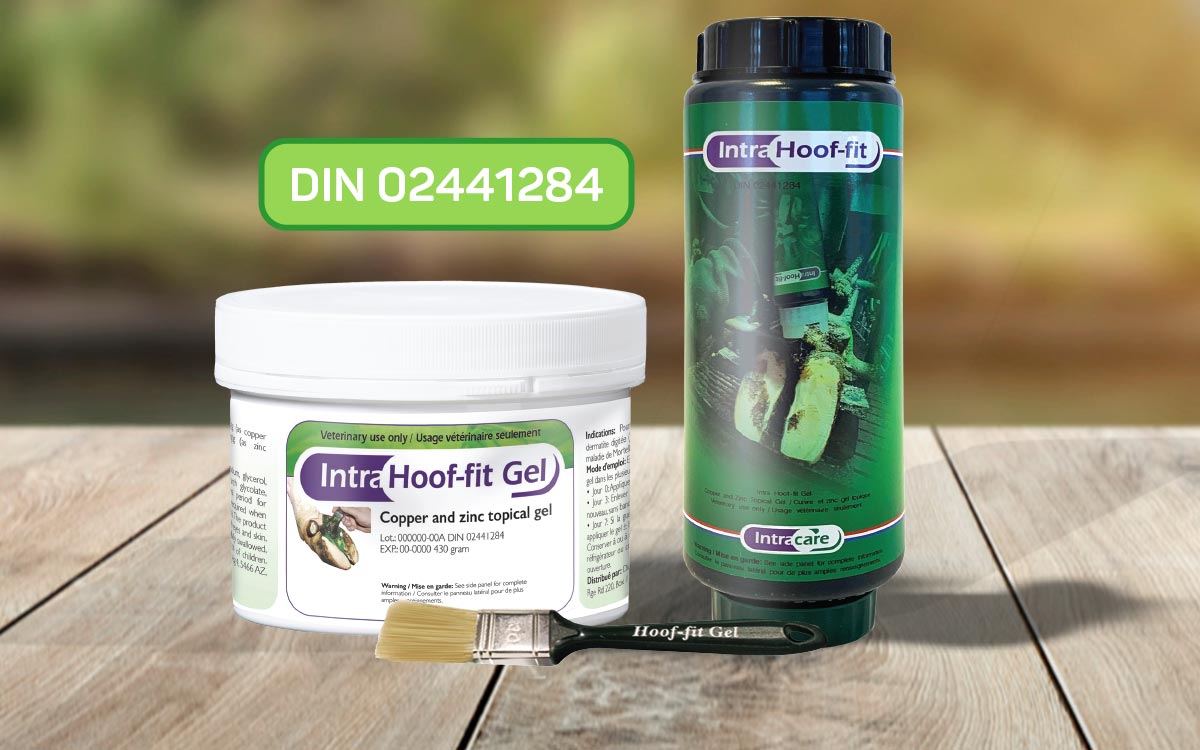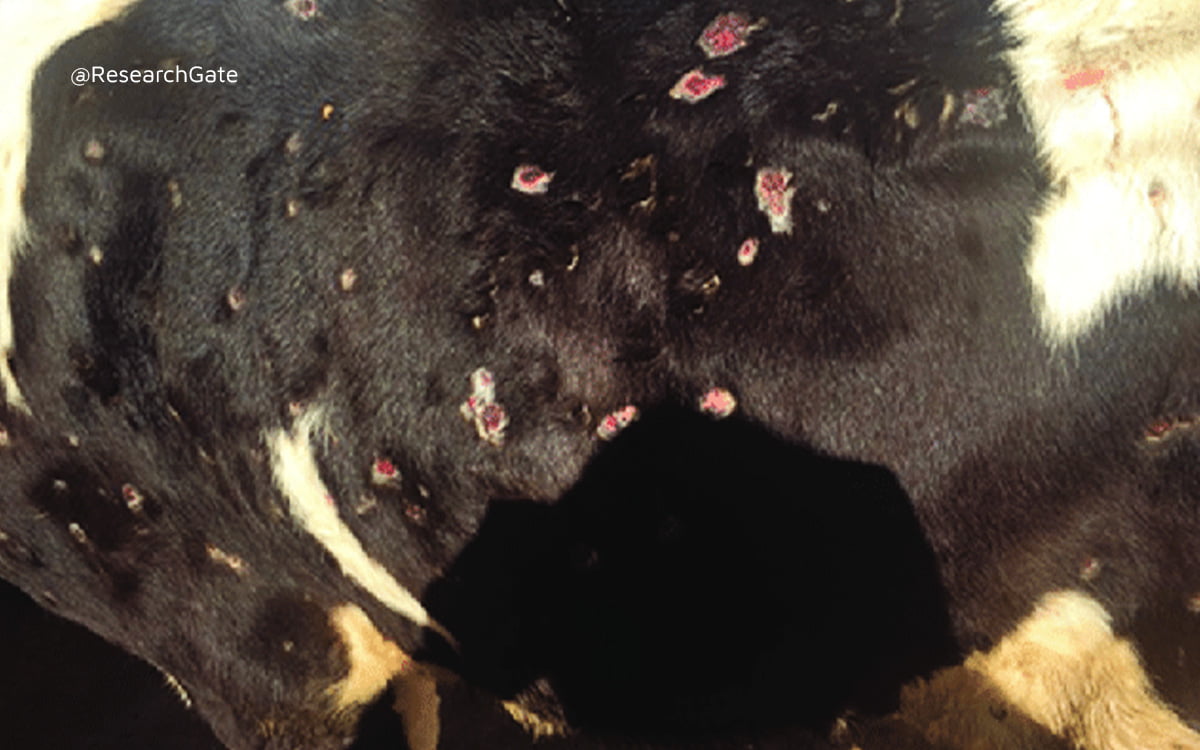What is the Proven Treatment for Digital Dermatitis?
Digital dermatitis (also called hairy heel warts, Mortellaro disease, fungus and strawberry foot, or DD for short) is perhaps the most common hoof problem in dairy cattle. It starts as mildly sore feet. In no time, the situation deteriorates and progresses to wart-like lesions, and, in the worst cases, the cow becomes crippled. Without the proper treatment, you quickly find yourself dealing with countless losses.
Digital dermatitis is treated by applying Intra Hoof-fit Gel topically to the affected area. This product is registered as an over-the-counter drug and has a proven success history without the development of antibiotic resistance or residues. A successful protocol also includes a footbath and spraying procedures.
Digital dermatitis is a prevalent disease of the feet of dairy cattle and can be intensive enough to bring operations down in dairy farms. It commonly overshadows other painful lesions that occur concurrently.

The highly contagious – it needs to be treated fast – bacterial disease appears as an erosive infection either on the heel bulbs, in between the two digits or the coronary band region, or at two or all three areas simultaneously. No breed seems to be immune to digital dermatitis.
Digital dermatitis seems to be more prevalent when the hoof is in frequent contact with the slurry. Therefore, the hoof disease is much more common in penned herds where the areas are persistently wet and unhygienic. The rate of infection with digital dermatitis seems highest in the fall and winter when the humidity in the environment is higher.
The infected cows appear to walk on tiptoes and shake their feet. DD is a painful condition that causes lesions and can trigger other hoof problems to aggravate the lameness. The question for vets is how to deal with this effectively, given the growing concern about antibiotic resistance.
Scoring the Stages of DD Lesions
Dr. Döpfer, Assistant Professor in Food Animal Medicine at the University of Wisconsin-Madison School of Veterinary Medicine, has done great work in classifying the different stages of DD. The M-stages represent stages during the course of DD. Here, the “M” stands for “Mortellaro.”
The five M-stages of digital dermatitis are as follows:
- M0: normal digital skin without signs of DD. Some authors have encountered difficulties finding an example for intact bovine digital skin without signs of any claw diseases, but young animals, such as calves and pre-partum heifers, are candidates for being negative for claw diseases.
- M1: early, small circumscribed red to gray epithelial defect of less than 2 cm in diameter that precedes the acute stages of DD (M2). In addition, M1 stages can appear between acute episodes of DD lesions or within the margins of a chronic M4 lesion as an intermediate stage.
- M2: acute, active ulcerative (bright red) or granulomatous (red-gray) digital skin alteration, >2 cm in diameter, commonly found along the coronary band in addition to around the dew claws, in wall cracks and occasionally as a sole defect.
- M3: healing stage within 1 to 2 days after topical therapy, where the acute DD lesion has covered itself with a firm scab-like material.
- M4: late chronic lesions that may be dyskeratotic (mostly thickened epithelium), proliferative, or both. The proliferation may be filamentous, scab-like or mass proliferation.

Treating Digital Dermatitis
Many antibiotic-based therapies have been invented to treat digital dermatitis, yet the condition appears to be hard to eradicate. In many cases, vets advise owners to learn to manage the disease in a financially acceptable manner in the hope of positive outcomes.
But digital dermatitis is known to return within a few weeks if there is no comprehensive hoof care approach to control the spread of new infections and the treatment of existing cases.
- It is of utmost importance that the hooves are properly trimmed at timely intervals and treated with Intra Hoof-fit Gel.
- Repeat topical treatment with Intra Hoof-fit Gel when needed on days 3, 7, and 10.
- It is also important to provide a dry and comfortable environment for the animals.
- After individual treatments, the whole herd (dry cows – heifers – milking cows) need to be placed on a hoof care protocol.
- Brainstorm and implement other measures that address environmental risk factors for the illness. These range from hygiene at foot trimming to frequent monitoring, and steps to improve yard/pen hygiene are most effective.

Whereas currently most veterinarians prominently use an off-label antibiotic topical to control DD, so far, none of them meet all of the following standards:
- Safe for the cattle, the user, and the environment.
- Assurance that no residues are found in meat or milk.
- Proven long-term efficacy in controlling DD.
- Easy to implement on farms with different pen systems.
Veterinarians and professional hoof trimmers are invited to apply for access to our professional purchasing platform.
The Move to a Non-Antibiotic Digital Dermatitis Treatment
There is a critical need for effective and long-term control of digital dermatitis given the high costs of culling, milk losses, curative hoof care, and antibiotic treatments. The estimated annual cost per lame cow varies from $295 to $410 per cow, with potentially more losses resulting from declined milk yield and prolonged calving intervals.
While studies show a reduction in lesions and pain in animals treated with antibiotics, these treatments do not result in a bacteriological cure. In light of the recurrent rates of the infection, a long-term solution is still required.
Diamond Hoof Care and Intracare present Intra Hoof-fit Gel, an effective and science-backed non-antibiotic treatment for digital dermatitis. A controlled study of M2 digital dermatitis lesions with the non-antibiotic Hoof-fit Gel shows it is more effective than commonly used antibiotic sprays and gels.
Research conducted on 172 cows in Europe indicates that 92% of ulcerative lesions of the bovine digital dermatitis (BDD) are curable with the zinc and copper chelate Hoof-fit Gel. Additionally, a Canadian study involving 50 cows resulted in a nearly 100% cure rate for M2 lesions.
Intra Hoof-fit Gel uses copper and zinc chelate solutions, which quickens the healing of digital dermatitis lesions. This is because they also cure undetected lesions: tiny ones that are difficult to detect but can heal fast. Overall, Intra Hoof-fit Gel is proven to be 1.58x more effective at treating digital dermatitis than commonly used antibiotic therapies for the disease. All antibiotic use in Canada is under veterinarian prescription and considered an off-label application.
Intra Hoof-fit Gel is…
Safe for Cattle, User, and Environment
Intra Hoof-fit Gel reduces the risk of antimicrobial resistance and superbugs. Superbugs are difficult-to-treat bacterial diseases that we are also encountering in humans, as a result of the overuse of antibiotics. Hoof-fit Gel is not an antibiotic treatment. Intra Hoof-fit Gel is registered to treat DD with a DIN number in Canada.
Proven to have Long-Term Efficacy
The spread and recurrence of DD as currently witnessed in herds stems from therapeutic inefficiencies and possibly overuse of antimicrobial treatments. Intra Hoof-fit Gel uses zinc and copper chelates to kill germs, heal the wound, and prevent DD from spreading. Copper and zinc have been shown to have unique antimicrobial properties and speed up wound healing.
Easy to Implement
Intra Hoof-fit Gel provides strong adhesion to the affected hoof for better coverage. The product comes in the package of your choice: an Intra Hoof-fit Gel jar with a lid or a convenient Intra Hoof-fit Gel SQUEEZ bottle. Both packages come with application brushes to make your work easier.

Directions of use are straightforward:
- Clean the claws three times a year.
- Apply Intra Hoof-fit Gel.
- Wrap with Intra Tape.
- Repeat treatment only on the animals that did not heal after one application.
Switch to non-antibiotic digital dermatitis treatment for positive outcomes, safety, and cost-effectiveness. Try Intra Hoof-fit Gel in our eStore or by our dealers.
Hoof trimmers and veterinarians: sign up to our professional center to receive special pricing.




